Electric skateboarding, a thrilling blend of technology and adventure, has captivated the hearts of urban explorers and outdoor enthusiasts alike. If you're on the verge of joining this vibrant community, you're likely intrigued by the seamless glide and effortless speed of these modern marvels. But what exactly powers these high-tech boards? The answer lies in understanding the intricate workings of electric skateboards. In this exploration, we delve into the core question: "How do electric skateboards work?" Unpacking this mystery will not only satisfy your curiosity but also equip you with the knowledge to make an informed decision as you embark on your electric skateboarding journey.
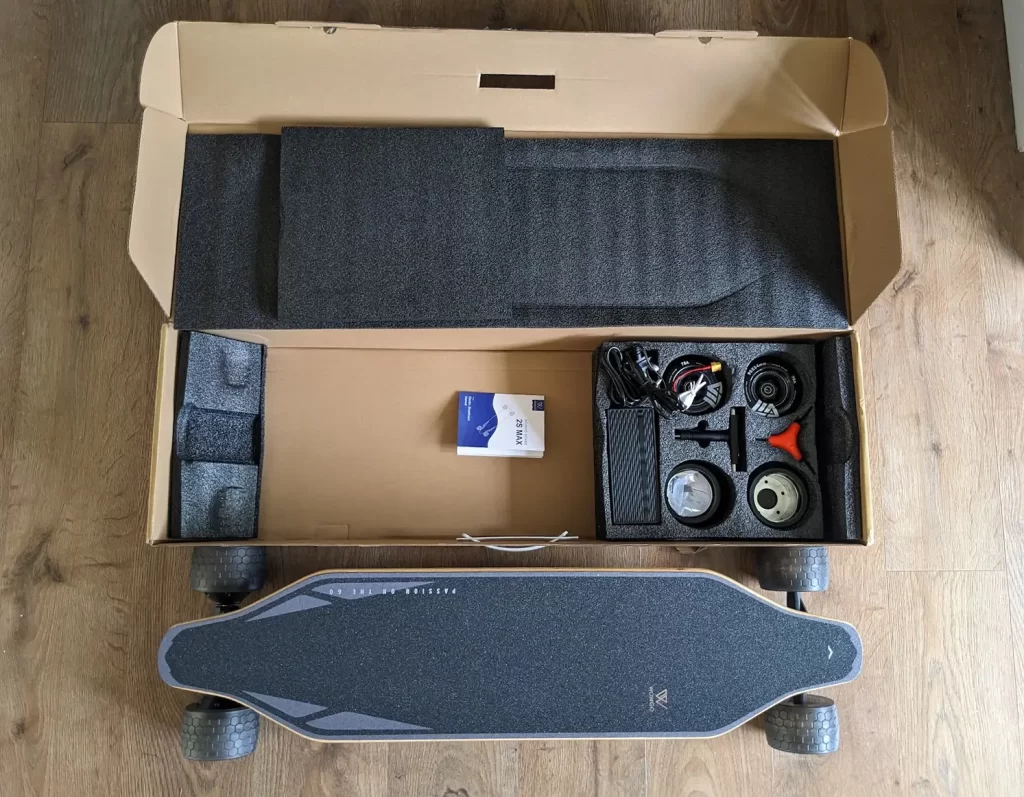
Electric skateboards are an innovative mode of transportation that combines the classic design of a skateboard with modern electric propulsion. These boards are composed of several key components that work in harmony to provide a smooth, efficient ride.
The deck, essentially the platform you stand on, varies in material and design. It can be made of maple for strength and flexibility, bamboo for vibration absorption and smoother rides, or carbon fiber for a lightweight yet sturdy option. The deck shape also influences the riding experience, with options ranging from shortboards, known for their portability, to longboards, which offer greater stability and space. Every deck comes standard with grip tape, but some boards now have shock-absorbing grip tape to provide cushion for uneven surfaces.
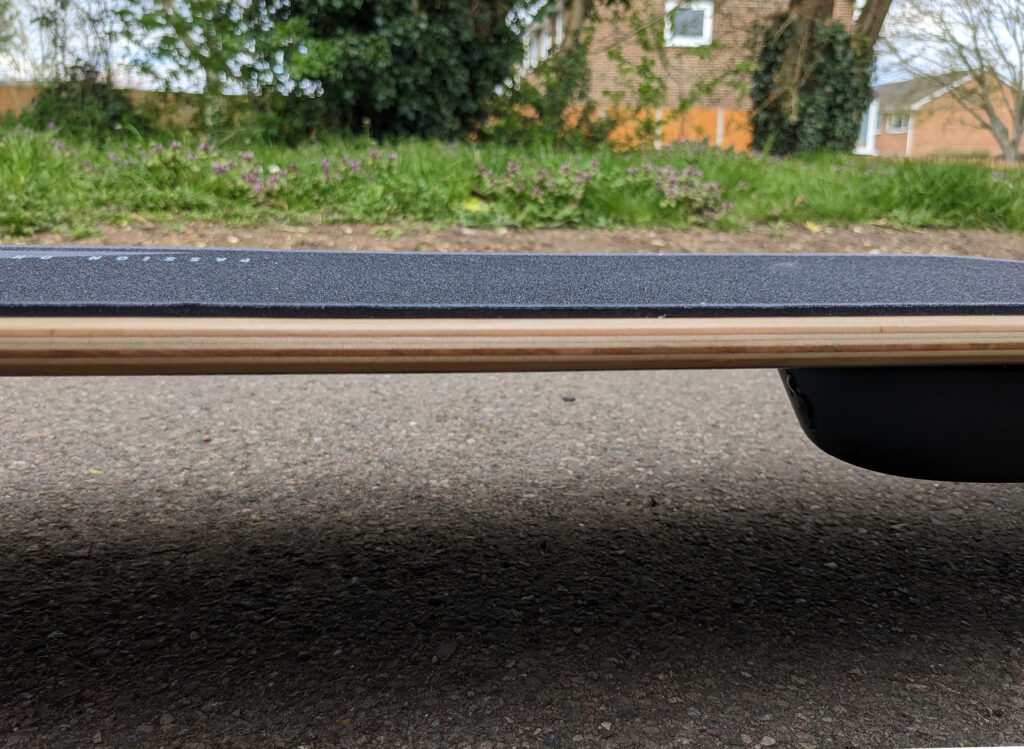
Attached to the deck are the trucks, which significantly impact the board's handling and turning capabilities. The trucks, which connect the wheels to the deck, contain bushings that contribute to the ride feel and responsiveness. They should be stable at high speeds but also allow for sharp turns when necessary.
The wheels, designed to suit different terrains and riding styles, play a crucial role in the overall experience. Larger, softer wheels are better for absorbing shock and handling rough terrain, whereas smaller, harder wheels are suited for smoother surfaces. The choice of wheels affects the skateboard's grip and maneuverability.
In the world of electric skateboards, the heart and soul of these high-tech cruisers are their motors and batteries. And when it comes to motors, it's a tale of two cities: Hub and Belt. For a much greater in-depth analysis of Hub Motors versus Belt Motors, check out my blog post.
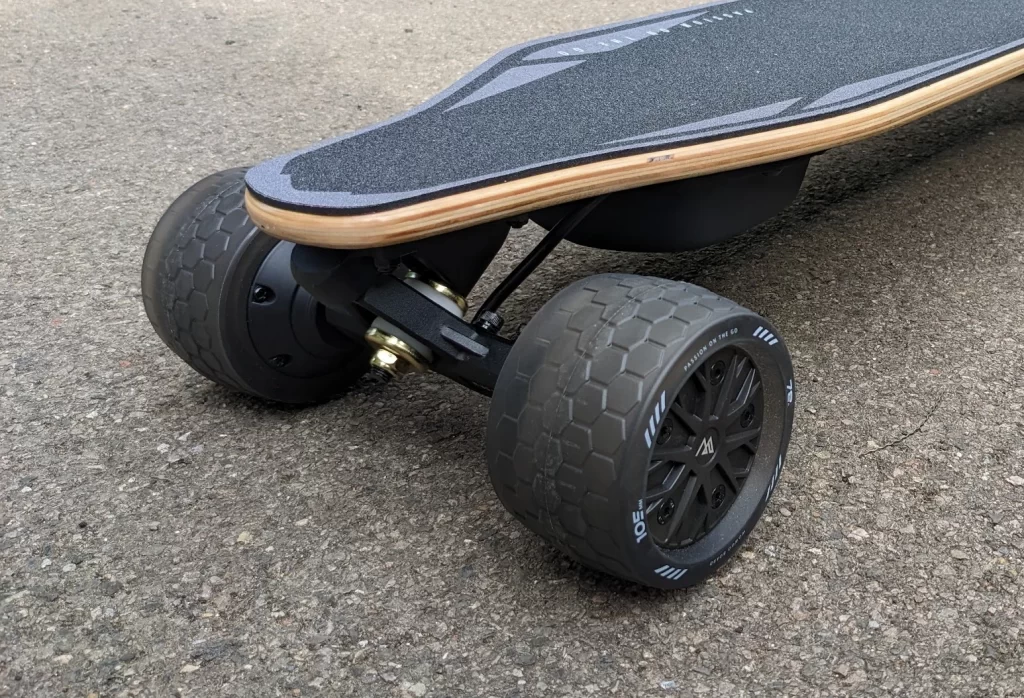
Hub motors are like the ninjas of the electric skateboard world. They're integrated into the wheels, offering a stealthier, more integrated look. Their operation is as quiet as a cat's purr, making them perfect for those covert missions around town (or just a peaceful ride). They're the minimalist's dream with fewer moving parts, translating to less maintenance and a happier wallet in the long run. Plus, they tend to be lighter, giving your board a less bulky feel. But it's not all sunshine and rainbows; hub motors can sometimes lack the torque of their belt counterparts, making steep hills their kryptonite. Also, customizing wheels can be a bit tricky, and they aren't the best at dissipating heat, which might make them sweat under pressure.
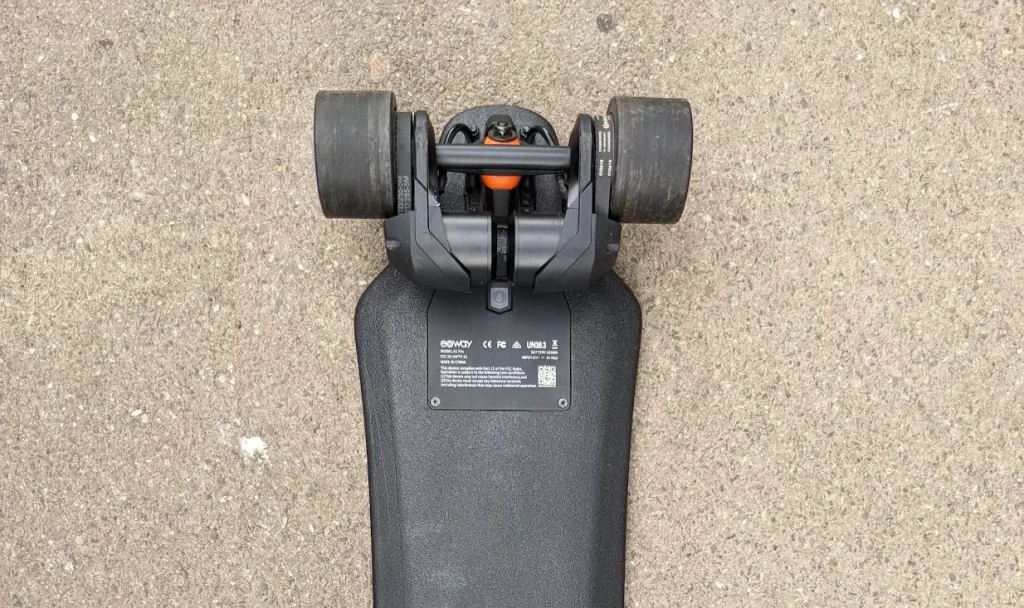
Belt motors, on the other hand, are the life of the party. They're all about power and customization. Think of them as the hot rod engines of electric skateboards. These motors sit externally and drive the wheels via a (you guessed it) belt. This setup allows for a significant torque boost, making hill climbing as easy as pie. Plus, you can swap out wheels faster than a chameleon changes colors, giving you the versatility to adapt to different terrains and riding styles. But with great power comes great... noise. Belt motors can be a bit on the louder side, which might not be music to everyone's ears. They also require more TLC in terms of maintenance, so if you're not a fan of getting your hands dirty, this might be a turn-off.
No matter the motor, the battery is the unsung hero, providing the juice to keep you cruising. Think of it as the heart pumping life into your board's veins. The capacity and type of battery not only dictate how far you can go on a single charge but also influence the overall performance of the board.
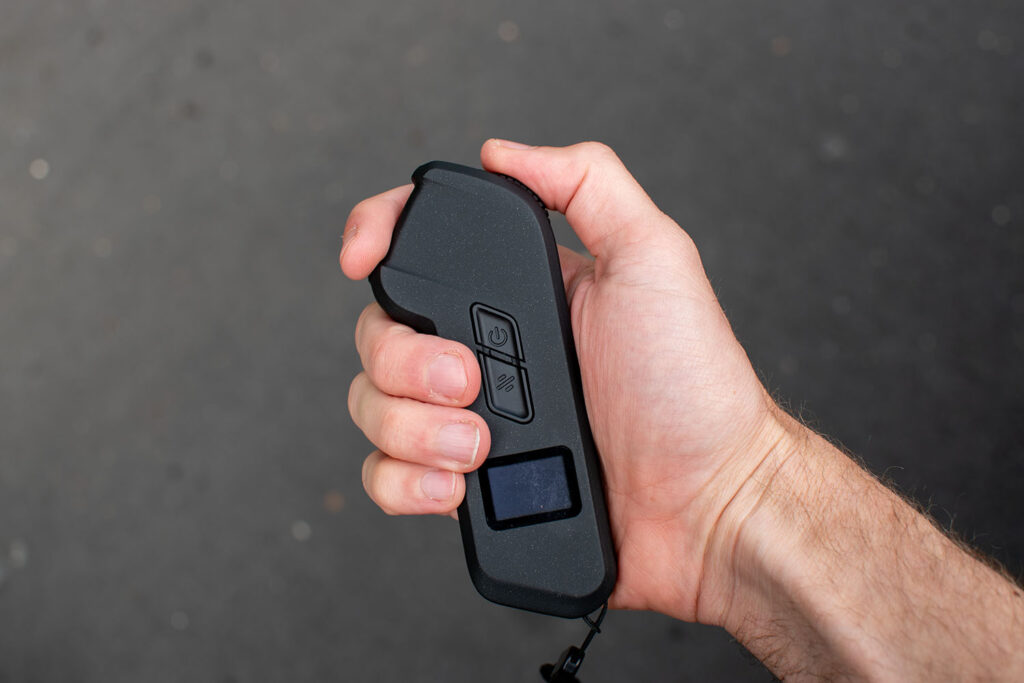
Navigating the world of electric skateboards isn't just about choosing the right deck or motor; it's also about mastering the art of control. Enter the Electronic Speed Controller (ESC) and the remote control, your trusty sidekicks in the journey of electric skateboarding.
The ESC in an electric skateboard is like the brain of the operation, but with more wires. It's a clever little gadget that tells your skateboard's motor how to behave – like a strict but fair ballet instructor. It controls the speed of the motor, manages acceleration and braking, and generally keeps things running smoothly. Without the ESC, your skateboard would be like a wild horse, powerful but untamed. The ESC takes your wild horse and turns it into a well-behaved show pony, ready to gallop at your command.
The remote control is your magic wand in the world of electric skateboarding. It's how you communicate with your board. Most remotes are designed to fit snugly in your hand, like a comfortable pebble that happens to control a high-speed plank of wood. The basic function includes a throttle for acceleration and a mechanism for braking. Some remotes also come with additional features like speed settings, battery indicators, and even reverse functionality. It's like having a tiny cockpit for your skateboard in the palm of your hand.
Electric skateboards come with a range of braking systems, each with its unique mechanism and control methods. Understanding these will enhance your riding experience and safety.
The most common method of braking on electric skateboards is through a handheld remote. This remote typically features two levers: one for acceleration and one for braking. To initiate braking, you apply pressure to the brake lever. The pressure applied dictates the strength of the braking force, allowing you to slow down smoothly and avoid abrupt stops that could lead to loss of control. For a more controlled deceleration, it's advised to gradually increase the braking force. Familiarizing yourself with the sensitivity of the brake lever is crucial, especially before riding in more challenging conditions.
On more premium electric skateboards, braking strength can sometimes be adjusted through a companion app. This feature allows for a more customized riding experience, enabling you to tailor the braking response to your liking or riding conditions.
Apart from these systems, you can also use your bodyweight to brake by shifting your weight backward, which creates friction between the wheels and the ground. This method is more intuitive and hands-free but might not be sufficient for quick stops.
Footbraking, a classic skateboarding technique, involves using your foot to create friction against the ground. This method is effective but requires practice and coordination for safe application.
In wrapping up our exploration of electric skateboards and how they work, we've delved deep into the mechanics and thrill behind these innovative gadgets. Understanding the key components that make up an electric skateboard – from the deck to the wheels, and the vital roles played by the motor and battery. These elements work in tandem to bring the skateboard to life, offering a unique blend of traditional skateboarding and cutting-edge technology.
